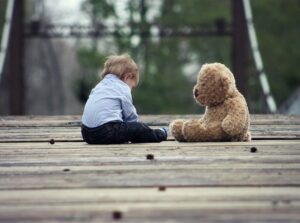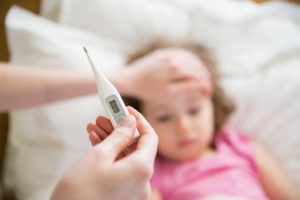Pneumonia, also known as pneumonia, is a serious disease. What symptoms indicate pneumonia, how is it treated? What do children need to be particularly careful about?
Here you can find out what the risk factors are and how the disease progresses. It also explains what the recovery phase is all about.
Table of contents
Pneumonia, Pneumonia, Pneumonia: What Is What?
All three names refer to the same disease. If one doctor speaks of pneumonia, and the other doctor speaks of pneumonia, this does not have to unsettle you.
But what exactly happens in this infectious disease? With about 500,000 cases/year in Germany, it is one of the most extensive diseases. About 1/3 of the patients have to be treated as inpatients. 3-5% of the cases do not survive the disease or die from the consequences.
To understand the disease, this overview will help you: In the lungs, there is an exchange of respiratory gases. You breathe in oxygen and breathe out carbon dioxide. In the alveoli, which are the small air sacs in the lungs, your blood absorbs oxygen. The oxygen transports important substances through your bloodstream.
In the case of pneumonia, this exchange is disturbed due to an infection: too little oxygen is taken in – and the toxic carbon dioxide cannot be sufficiently exhaled. So the body is not only undersupplied, but also poisons itself a bit.
Not All Pneumonia Is The Same: These Forms Are Distinguished
Localization Of The Inflammation
Alveolar Pneumonia
In this form, the alveoli are filled with fluid due to the inflammation and cannot work properly.
Interstitial Pneumonia
Healthy alveoli, but an inflamed connective tissue around the alveoli. This form is caused by bacteria, fungi, or parasites.
Origin
Primary Disease
The patient is healthy and becomes ill for no apparent reason. The symptoms of pneumonia develop, for example, from a flu-like effect.
Secondary Disease
Pneumonia is a symptom of a previous illness, such as smoke inhalation or cystic fibrosis.
Pneumonia Can Be Contagious
Ambulatory-acquired Pneumonia (AEP Or CAP)
Patients who become infected with the disease at home from various pathogens.
Nosocomial Pneumonia (HAP)
Pneumonia does not show symptoms until 2 days after the onset of inpatient hospitalization. Pathogens here are multi-resistant germs in hospitals.
Risk Groups For Pneumonia:
- Babies and young children.
- Old and bedridden people.
- Smokers and alcoholics.
- People with dusty occupations (firefighters, bricklayers).
- Patients with immune deficiency.
- Patients with lung diseases like asthma.
Symptoms Of Pneumonia
Pneumonia presents with symptoms of varying intensity, depending on the type of disease. Pneumonia may present symptoms that are more consistent with other conditions, so it is important to look at the big picture. The most common symptoms include:
- Severe feeling of weakness and illness.
- Fever above 38.5 °C for pneumonia caused by bacteria, only mild temperature for viruses.
- Chills.
- Heavy breathing with initially dry cough, later expectoration of mucus.
- Chest pain.
- Increased pulse and respiratory rate.
- Nasal wing breathing (the nostrils quiver when the air is drawn in – important for diagnosis in infancy!).
How Do You Recognize Symptoms Of Pneumonia In Children?
Babies and toddlers, in particular, show some symptoms of pneumonia that are not pronounced in adults. Individuals who can already articulate will not gasp for air over nostril breathing. Babies have no other choice – a toddler will not breathe gently quietly either.
Children quickly become pale and dull, sometimes even bluish lips (cyanosis), which is due to low oxygen levels in the blood. When the dry cough in babies and toddlers turns into greenish sputum, the little patients often swallow the sputum.
Afterwards, they then vomit up thorough mucus. Tense skin over the respiratory organs and pressure-related ear pain are also common during the course of the disease.
How Is Pneumonia Treated?
If the diagnosis by means of listening, tapping, and X-rays of the lungs shows pneumonia beyond doubt, the type of disease must be determined. Only then can the correct treatment be given. In some cases, a CT scan or ultrasound is also necessary to obtain a definite diagnosis.
The administration of medication depends on the causative agent of the disease: antibiotics in the case of bacterial infections, antifungal agents in the case of fungal infections, agents against viruses in the case of a viral infection. The drugs treat the focus of the disease and support the immune system.
However, accompanying preparations that alleviate the symptoms are absolutely necessary. Antipyretics and cough expectorants or cough suppressants, as well as medicines to liquefy secretions from cough in children. Painkillers are also important – the body needs its strength to fight the disease.
Treatment In The Hospital
Infants and toddlers are usually hospitalized without exception. They must be closely monitored and supervised, sometimes even external ventilatory support or the administration of supplemental oxygen is necessary.
Treatment At Home
Older children and adults who can point to their symptoms are also well treated at home for pneumonia. It depends, of course, on the type of illness – pneumonia resulting from smoke inhalation is better treated as an inpatient.
Important for treatment at home: do not entrust grandma with nursing care. Elderly people are at increased risk of illness if pneumonia is contagious.
Why Is Pneumonia So Dangerous?
Pneumonia has symptoms that don’t sound dangerous at first. So why is pneumonia the infectious disease with the most deaths? It is not the symptoms that are fatal, but the secondary diseases and the immense weakening of the body.
A disturbing exchange of oxygen in the blood means that many substances important for organ functions can no longer be adequately transported and distributed. This leads to life-threatening oxygen deficiency and possible blood poisoning. Via the bloodstream, the pathogens of pneumonia can also infect other organs – pericarditis or meningitis are then the results.
In addition, the immune system is severely weakened: if there is too little oxygen in the blood, the body can no longer defend itself sufficiently against other germs.
Course Of The Disease Pneumonia
The symptoms of pneumonia are often confused with chronic bronchitis, tumor disease or inhaled foreign bodies. However, differential diagnosis quickly brings clarity in this case.
The typical course is a sudden, severe feeling of weakness with shortness of breath and a dry cough.
The temperature is at least elevated. After a few days, the painful, dry cough changes to a barking, deep cough with greenish sputum. The feeling of weakness increases – simply climbing stairs completely exhausts the patient. Circulatory weakness and sweating occur, even when it is just a matter of brushing teeth.
In severe cases, apathy develops if left untreated, as the carbon dioxide cannot be sufficiently exhaled. This usually affects older patients. In children without other illnesses, the symptoms of pneumonia subside after 7-14 days.
Optimal Care For Pneumonia: What You Should Pay Attention To Day By Day
bronchitis that has been spread can naturally develop into pneumonia. If you notice pneumonia symptoms in yourself, be sure to see a doctor! Remember that most pneumonia pathogens are contagious, and you certainly don’t want to put your family in danger from spreading pneumonia.
Four Pillars Are Important For Treatment
Observation
Check on your patient often so you can respond to circulatory weakness.
Positioning
Try to make breathing as easy as possible by positioning the patient on pillows.
Drinking
Children in particular show symptoms of unwillingness to drink when they have pneumonia. Always motivate them to drink.
Rest
The body is still weakened long after the disease has healed. Make sure that your patient takes it easy! In the first weeks of recovery, let children stand up only for hours at a time and play outside only for minutes at a time. You can increase it slowly – but be sure to give the lungs time to recover properly.
These Causes Can Lead To Pneumonia, And Here’s How You Can Take Preventive Action
If pneumonia is contagious, it is caused by fungi, bacteria, viruses, or parasites. YOU can protect yourself and your loved ones from pneumonia by observing special hygiene when dealing with sick people. The pathogens are usually transmitted by droplet infection.
In case of a severe gastrointestinal infection, vomiting may occur. If some of the vomit is inhaled, there is a risk of pneumonia. If you have a young child with frequent vomiting, make sure that the stomach contents can always drain away properly.
Smokers make themselves a risk group – cigarette smoke attacks the alveoli. Smokers are therefore more susceptible to pneumonia. If you work in a job that involves a lot of dust, be sure to wear a mouthguard. This way you can minimize mechanical irritation of the lungs.
Pneumonia has symptoms that can go away quickly. But weakness sometimes persists for months. Give yourself and your patient plenty of rest! Recovery takes time, and pneumonia must heal well to avoid becoming chronic.











1 thought on “Pneumonia: Causes, Signs, And Treatment”